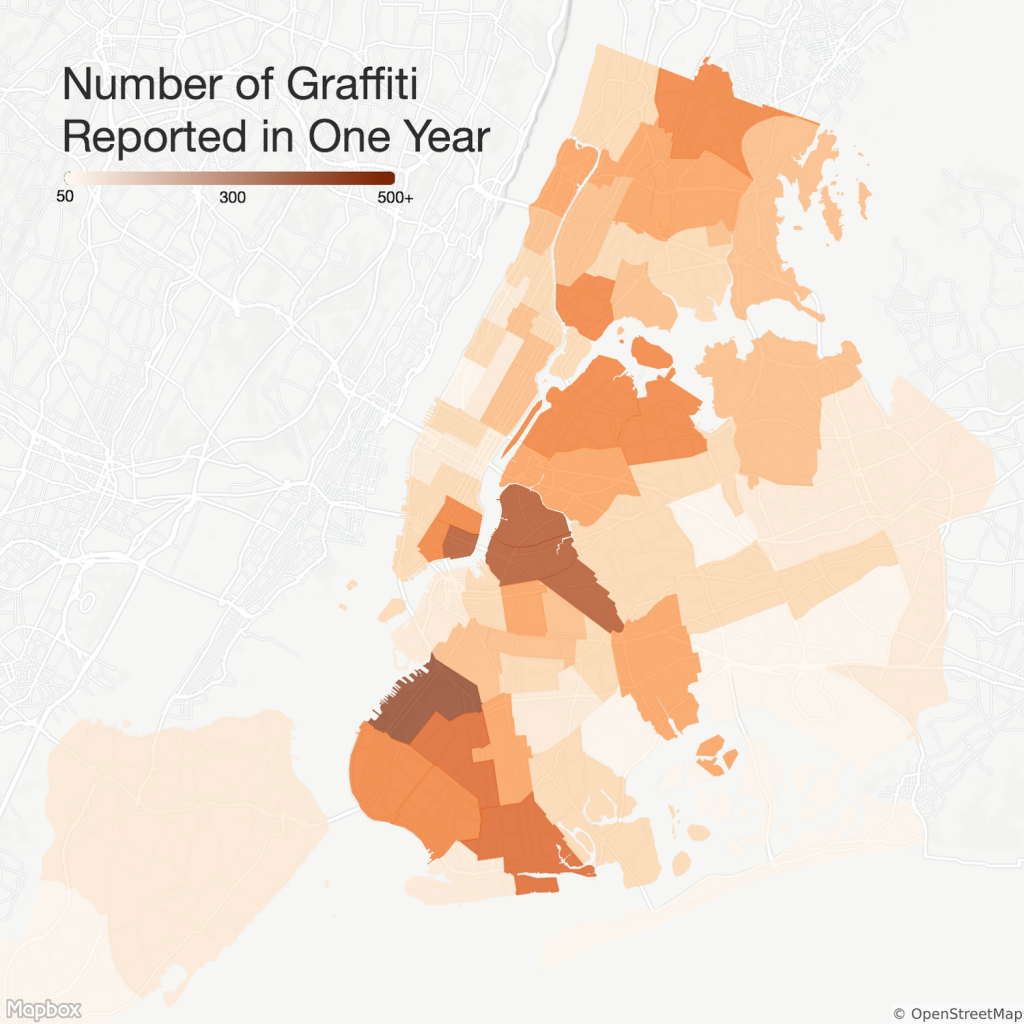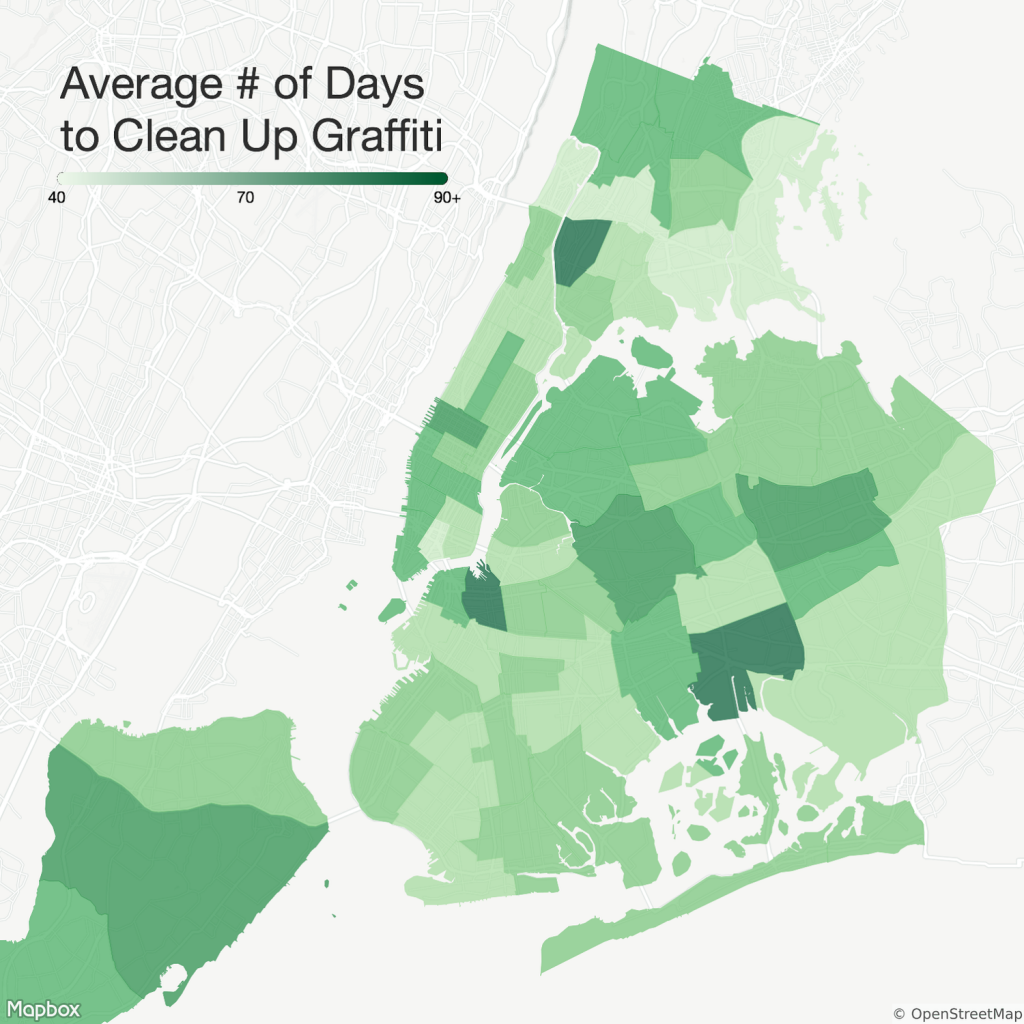New Yorkers feel strongly about seeing graffiti on their streets, and one data visualization enthusiast has just made it easier for residents to find out the number of graffiti incidents reported in one year and how long it took to clean them up.
Nicholas Reyland used data from the city’s open data portal to find the number of NYPD reported graffiti incidents by borough and and the average number of days it took the city to clean it up, Viewing NYC first reported. He culled data from May 2015 through May 2016.
“I wanted to take raw data and turn it into a visual that’s easy to digest,” Reyland said. “I appreciate graffiti as an art and when I discovered the graffiti reports from NYC’s open data site, I thought it would be really cool to see how much there is across the city.”
According to the data, there were 13,585 reports of graffiti over the course of a year and Queens ranked fourth in number of reported incidents with 2,042. Staten Island ranked last with only 241 reported incidents and Brooklyn took first place with 5,555 reported incidents of graffiti.
Western Queens seems to have the most reported incidents of graffiti with Astoria, Long Island City and Jackson Heights being hit the hardest by street tags. According to the data, there were 310 reported graffiti incidents within the 114th Precinct, which includes Astoria, parts of Long Island City Woodside and Jackson Heights.
In the 115th Precinct, there were 235 reported incidents during that same time period in East Elmhurst, North Corona and parts of Jackson Heights.
Other areas such as Flushing, College Point and Whitestone also have a higher incident of graffiti compared to other neighborhoods in the borough.
The 109th Precinct, which covers Flushing, College Point and Whitestone had 189 reported incidents of graffiti from May 2015 through May 2016.
Not surprisingly, those same neighborhoods have some of the longest wait times for graffiti cleanups with an average of about 70 or more days to clean up the vandalism. In neighborhoods such as Jamaica and Howard Beach, the average number of days it took to clean up the graffiti was even longer.
Not all cases of graffiti clean up have been logged on the website so the average number of days to clean up the graffiti may not be completely accurate in every precinct.
Through his research, Reyland found that neighborhoods in other boroughs with a high reported amount of graffiti also had a relatively quick cleanup.
“This project piqued my interest after I read an article that said high graffiti reports are associated with high crime rates. As I mapped the number of reports and the average days it takes to clean up a report, I noticed that neighborhoods you would expect to have high reports of graffiti did, like Greenpoint and Lower East Side, but they also responded relatively quickly to them as well,” he said.
Earlier this year, Mayor Bill de Blasio introduced CleaNYC, a $4.2 million project to increase Graffiti-Free NYC efforts and sidewalk power washing in commercial corridors, as well as expand Sunday and holiday litter basket collection service and highway shoulder and ramp cleanup.
Some Queens residents fed up with the graffiti in their neighborhoods have taken matters into their own hands.
Whitestone resident Christine Ruppert Coniglio, observed a man tagging signs in Whitestone in May and called the 109th Precinct immediately. The culprit was arrested.
From May 2015 through May 2016 there were 133 incidents of reported graffiti in the 104th Precinct, which covers Ridgewood, Glendale, Maspeth and Middle Village and a local group has been cleaning it up for years.
The Greater Ridgewood Restoration Corporation (GRRC) has been running an anti-graffiti program for 25 years and residents of Ridgewood, Glendale, Maspeth and Middle Village can call GRRC cleaning crews who will use a hot water pressure washer and paint remover to clean graffiti on washable surfaces like brick. The crews also paint over non-washable surfaces free of charge.





































